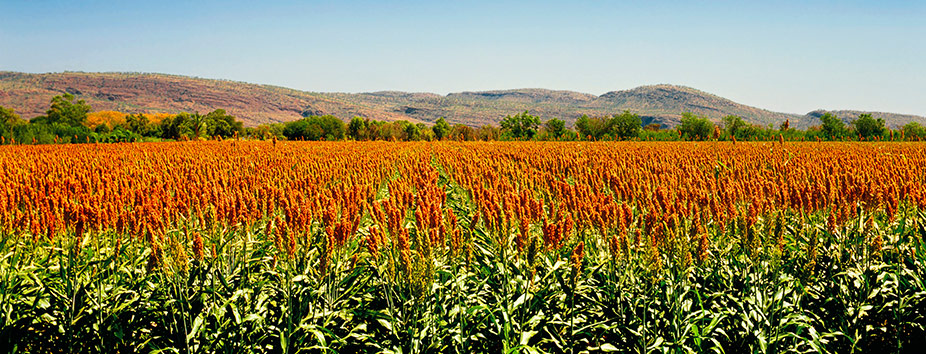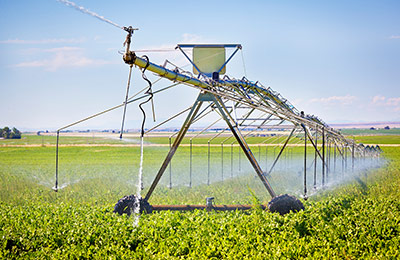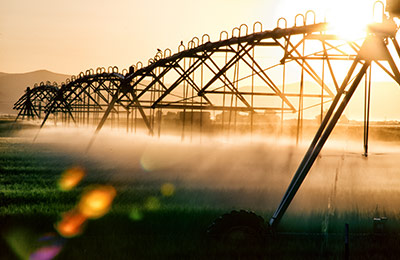Investing in security and growth

What does the National Water Infrastructure Development Fund promise to deliver?

What does the National Water Infrastructure Development Fund promise to deliver?
Words: Julian Leatherdale
In July 2015 the Minister for Agriculture and Water Resources, The Hon Barnaby Joyce MP, announced the release of the much-anticipated Agricultural Competitiveness White Paper, ‘Stronger Farmers, Stronger Economy’, the government’s strategic policy for Australian agriculture’s long-term competitiveness and profitability.
The White Paper recognises that water infrastructure is critical to the future security and prosperity of Australia’s agriculture industries and has allocated a total of $500 million towards a new water infrastructure fund.

The White Paper backgrounds some of the challenges for agriculture in Australia. In 2013–14 the Australian agriculture sector accounted for 62 per cent of the country’s water consumption. Due to variable rainfall and rising population, Australia’s storage capacity is projected to fall from the current 4ML (megalitres) per person to 2.6ML by 2061 if no action is taken.
Irrigation, which is particularly critical to the dairy, cotton, rice, sugar and horticultural industries, contributed 28 per cent in value to agricultural production in 2012–13 but occupied only 1 per cent of agricultural land.
The White Paper identifies expansion and modernisation of water storage and irrigation schemes as fundamental to agriculture’s future water security.
The White Paper announced the establishment of the National Water Infrastructure Development Fund (NWIDF) with a commitment of $500 million to develop new and augmented water infrastructure, including dams, pipelines and managed aquifer recharge projects, around Australia.
A spokesperson for the Minister said: “The capture, storage and transport of water for irrigated agricultural production will allow the expansion and diversification of crop production and increase the resilience of farmers to deal with Australia’s naturally variable climate.”
The $500-million commitment comprises two parts. The first consists of a $50-million feasibility component that will kick start and inform strategic planning over four years commencing in 2015–16. The second is a $450-million capital works component for the construction of projects over eight years commencing in 2017–18, co-invested in partnership with state and territory governments and, wherever feasible, the private sector.
“The irrigated agriculture sector will be the primary beneficiary of the new water infrastructure,” explained the spokesperson for the Minister.
“Strategic investment in water infrastructure will support Australian irrigated agriculture to capitalise on new and emerging domestic and international market opportunities, boost production, enhance profitability and respond to future food and fibre demands.”
The White Paper on Developing Northern Australia, which was released in June 2015, outlines the federal government’s plans to unlock the economic potential of northern Australia.
Of the total $500 million in funding committed through the NWIDF, at least $200 million has been earmarked to progress projects in northern Australia, comprising at least $30 million towards feasibility studies and $170 million towards capital works.
The spokesperson for the Minister explained this prioritisation: “This funding recognises the unique circumstances of northern Australia, such as the lack of detailed water resources information and soil data at the catchment level, and the need for innovative solutions to water storage in the region.
“There are also several under-utilised water sources in northern Australia, as opposed to some existing irrigation areas in the south where water is already fully allocated.”
“In northern Australia new water infrastructure will allow farmers to grow crops such as sugar, sorghum, chia, sandalwood and fodder crops so the cattle industry can become a year-round supplier of beef to capitalise on growing Asian demand.”

The Department of Agriculture and Water Resources invited Expressions of Interest for the feasibility component round of $25 million from state and territory governments. According to the spokesperson for the Minister, successful applicants are expected to be announced in early 2016.
[Source: Excerpt from White Paper on Developing Northern Australia]
The Mitchell River basin of Far North Queensland currently supports extensive grazing of native pastures and irrigated production worth about $100 million annually from the 17,000ha Mareeba Dimbulah Irrigation Scheme. Preliminary analyses of land suitability and water capture and storage options indicate the ability to support a further 60,000–80,000ha of irrigated agriculture in the catchment, drawing on water stored in new in-stream or off-stream dams.
The West Kimberley region is primarily used for extensive grazing on natural pastures and irrigated agriculture. The region currently has no water storages of regional significance; however, it has expanding nodes of irrigated agriculture utilising groundwater. It has extensive areas of soil that are suitable for agriculture— up to 60,000ha—which could be developed for medium-scale mosaic irrigated agriculture, utilising overland flow and groundwater.
The Greater Darwin region comprises the Northern Territory’s largest (3000ha) and most valuable (about $200 million production per annum) irrigation area, watered mainly using groundwater. The development of a number of small to moderate-sized dams would enable this area to be increased tenfold, up to 30,000ha. The region’s proximity to Darwin would provide opportunities for dams with multiple uses.